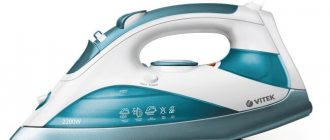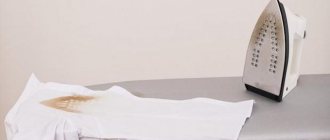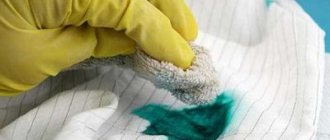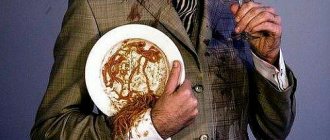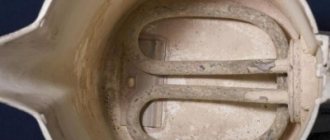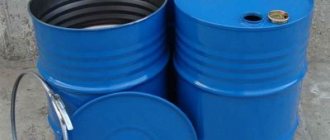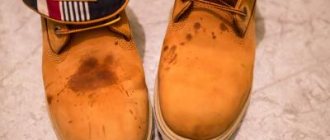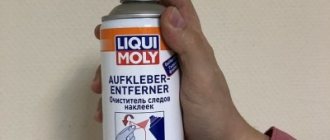During the day, the housewife irons many things: children's and adult clothes, bed linen, curtains, cloth oilcloths. Ironing is often done in a hurry, because you need to rush to work or do a lot of things around the house. There are times when, as a result of an oversight or an absurd accident, a stain or an unpleasant shine appears on your favorite skirt or blouse. This spoils the appearance of the clothes; you can no longer wear them after an “accident.” It is especially unpleasant when a mark appears on an expensive or new thing. But don’t give up, because there are several effective ways to remove scorch marks and shine that appear after ironing.
Causes of scorch marks
Before removing iron marks, you need to figure out why this is happening. This will allow you to find the most effective removal method, as well as prevent stains from appearing in the future.
There are several main reasons for the formation of scorch marks:
- The soleplate of the iron is too hot. If the temperature conditions specified in the instructions are not observed, the material is severely damaged, and sometimes it is impossible to restore it. Therefore, before ironing, always read the information on the product label and follow it;
- insufficient rinsing. Under the influence of the hot surface and hot air coming out of the iron, the powder melts or burns, leaving a mark on the product;
- failure to follow advice when ironing things. Each material has specific care requirements, for example, wool needs a lot of moisture, but silk, on the contrary, does not tolerate it;
- dirty iron soleplate. With each ironing, a small layer of soot remains on it, which thickens over time. Equipment gets especially dirty after processing wool and synthetic materials;
- lime, rust inside the iron, which flies out of the holes in the sole in flakes; faulty equipment. An old iron may not work well, leaving behind marks.
Caring for synthetics
The lion's share of the entire clothing market now consists of synthetic items - the most practical and cheap. However, such material can also be damaged when ironing. Before starting cleaning, remove the burnt layer of fibers from the surface using a mechanical method (scissors, brush, razor). A yellow mark will remain on synthetics; to get rid of it, you need to consider several of the most effective methods:
- Borax solution - take 30 ml of powder per liter of water. The item is soaked in the prepared solution for half an hour. Wash it and iron it.
- The uses of soda are quite varied. In case of an ironing stain, rub the damaged area with baking soda soaked in water. Once dry, brush off any residue and wash as usual.
- Salt treatment. The mark formed on a skirt or T-shirt is processed as follows: pour table salt onto the burnt area and sprinkle it with water. Once the product is dry, simply rinse it.
What to do first?
It’s very easy to ruin a thing – you just need to get distracted for a second and leave the iron on the fabric a little longer than necessary. But if you act quickly, you can save your favorite thing.
First of all, to remove fresh iron marks from clothes, you need to:
- Soak the damaged item for 5-10 minutes in cool water.
- Rinse it thoroughly.
- Mix 2 tbsp. l. washing powder with warm water until a paste forms.
- Apply the resulting mixture to the “burn” area and rub thoroughly.
- After 5-7 minutes, rinse the item in cool water. It is important that it is not hot. If you increase the temperature, the mark may become even stronger.
This procedure is first aid; it will only help reduce the consequences of the “burn”, but not remove them completely. To do this, you will need more effective folk or professional remedies.
Attention! After removing the scorch, take care of the iron: clean its sole from carbon deposits and the “insides” from accumulated lime and rust.
Some tips for ironing fabrics
To prevent the formation of stains, tans and shine on any fabrics, adhere to the following universal rules:
- Iron wool and knitwear through slightly dampened gauze.
- If possible, iron items made from other fabrics from the wrong side - then you will definitely not spoil their appearance.
- Iron lace products, as well as items with embroidery, only from the wrong side, choosing a medium temperature level of the electric iron.
- For decorative items of clothing, it is best to use remote steam treatment. If this is not possible, carefully iron the decor with a warm iron.
- Velor and velvet require careful handling. Moisten the surface with a spray and gently iron these fabrics while they hang.
- Do not iron white items until they are dry. Ironing while wet may cause stains.
Remote steam processing of products
In addition to the above methods for getting rid of stains, scorches and shiny iron marks, there are many other methods. For example, you can use store-bought stain removers. But it is best to strictly follow the recommendations for ironing various fabrics, then there will be no need to restore your favorite clothes.
How to remove iron marks on trousers?
To remove scorch marks, you need to determine the material from which the product is made. For all types, a 9% vinegar solution is suitable.
You can also remove shine from the iron from trousers using laundry soap. It is enough to wash them in a solution of 1 bar in 2 liters of water. Another option, more economical, is to make a soap paste, which is applied to the damaged area for 50-60 minutes.
In addition, you can easily remove marks on trousers by ironing them through a sheet of thick, preferably white paper.
How to remove from dark fabrics of any type
There are universal methods for removing scorch marks from fabrics of any color and composition.
Salt and ammonia
To eliminate unnecessary shine that appears after ironing, prepare the following composition:
- water - 2 tbsp. l.;
- salt - 1 tsp;
- ammonia - 1 tsp.
Wipe the damaged fabric with the solution. Then the item is washed and ironed through damp cotton cloth.
Vinegar solution
A napkin used for ironing clothes is moistened in a solution of 9% vinegar. To prepare it take:
- water - 1 part;
- vinegar - 1 part.
See also
11 ways to remove and clean silicone from clothes at home
Iron the problem area through it.
Laundry soap
Take 72% laundry soap. The piece is ground on a grater. The shavings are dissolved in a small amount of water. Soak a piece of cotton cloth in a soapy solution. Squeeze out excess liquid. Apply to the scorch area. Iron. The item is washed.
Black tea brew
Pour some tea leaves from the teapot into a saucer and soak a cotton pad in it. Place it on the stain, press, rub. Repeat the procedure several times. Rinse the item under the tap.
Pumice stone, nail file or machine
These devices carefully remove fibers that have received thermal damage from the fabric. After the procedure, the tissue is first passed over with a soft, damp sponge or cloth. After this, the clothes are rinsed.
How to remove a mark on a sofa or carpet?
Some people have the habit of ironing clothes on the sofa due to the lack of an ironing board. However, upholstered furniture is not at all suitable for such procedures: it is not resistant to high temperatures. At best, a stain will appear on it, at worst, the product will catch fire. It also happens that the iron accidentally fell on the carpet and left a mark on it.
You can remove burnt stains from such surfaces using boric acid or dishwashing detergent.
You need to do the following:
- Pour 0.5 liters of water into a container.
- Add 5-6 drops of dishwashing liquid and mix thoroughly.
- Dip a paper towel or piece of gauze into the solution.
- Place it on the damaged area of the sofa or carpet.
- Iron the stain on low until it comes off.
Attention! Instead of upholstered furniture, it is better to use a table covered with a thick, light-colored fabric for ironing. It's much more convenient and safer.
Stain removers
If folk remedies do not help get rid of scorch marks, you can remove them with the help of stain removers. Household chemicals are more effective, but they are quite aggressive. Therefore, if the owner of a damaged product has allergies, you need to choose baby products that do not cause a negative reaction. Another advantage of stain removers is the ability to clean any material from which clothes, carpet or sofa are made.
Among household chemicals suitable for removing iron stains, the following brands can be distinguished:
- “Vanish” - available in several forms that can be used when iron marks are detected;
- “Amway” - an environmentally friendly spray that helps remove different types of stains;
- "Faberlic" - the pencil easily copes with fresh dirt;
- “Eared nanny” – helps remove stains from the clothes of allergy sufferers and children;
- "Bos Plus" - suitable for light-colored items.
Colored and synthetic clothing
When removing stains left by ironing on synthetic and colored clothing, it is important to carefully select the appropriate methods. Wrong choice can lead to fabric damage
To do this, you can use the following recommendations:
- To remove scorch marks on clothes made of raincoat fabric, you need to carefully rub the stain with a pumice stone or nail file.
- To remove shiny marks on clothes made of silk, satin or polyester, you need to apply a small amount of kefir to the stain and then leave the item for two to three hours. Next, wash the fabric as usual. You can also soak damaged clothes in milk.
- A synthetic item can be cleaned using a soda solution prepared in a ratio of 2:10 with water. Soak the fabric in the solution for three hours, then rinse in cold water. If the stain is heavily soiled, you can apply baking soda powder to the stain, then moisten it and leave for two to three hours.
- Clothes made from brightly colored fabrics can be cleaned using grated onions. Apply the paste from it to the fabric for at least an hour, then remove the dried mass and wash the clothes using conditioner, which will help remove the unpleasant odor.
To prevent stains from appearing on clothing in the future, it is important to choose the temperature setting according to the type of fabric. When ironing delicate items, it is recommended to use the steam mode more often
In addition, when starting to iron clothes, you should not be distracted, because it is inattention that often leads to the appearance of stains from the iron.
Prevention measures
Sorting clothes
In order not to switch the mode many times during ironing, it is better to immediately sort things into several piles and iron them in this order:
- Clothes made from delicate materials.
- Synthetics.
- Things made from natural fibers.
This way the temperature will rise, and you won’t have to wait for the soleplate of the iron to cool down. If, after wearing clothes made of natural fabric, you need to iron synthetics or a product made of delicate material, reduce the setting and wait 3-4 minutes. Haste can cause things to get damaged.
It is worth considering that silk is ironed without steaming or water supply, and lace and embroidery are processed only from the reverse side.
Correct temperature
The main reason for the appearance of marks on clothes is setting the wrong temperature when ironing.
To determine the temperature, read the instructions on the label. If for some reason this is impossible to do, you can determine the mode by the type of fabric:
- cotton and linen are allowed to be ironed at 200 degrees - at three;
- synthetics can withstand temperatures up to 150 degrees, mode – deuce;
- viscose and wool should be ironed at 100-120 degrees, on a single or double setting;
- tweed is ironed at medium temperature, up to 140 degrees;
- silk, satin, chiffon and polyester are ironed on a single unit, at a temperature not exceeding 90 degrees;
- Nylon, vidlon and nylon are prohibited from ironing.
Attention! If you are not sure about the origin of the material from which the clothes are made, it is better to iron them on the minimum setting, gradually increasing the temperature.
Cleaning the iron
To avoid the appearance of difficult-to-remove stains from rust, lime and carbon deposits, you need to clean your iron regularly.
Special pencils, a solution of citric acid (1 tablespoon per 0.5 liter of water) or vinegar (1 tablespoon per 1 liter of water) help remove dirt from the outside.
To clean the holes in the sole, you need to fill the reservoir with clean distilled water, and then steam a light-colored cloth made of natural material for several minutes.
You can clean the inside of the iron only with special products that are usually produced by manufacturers of household appliances.
Less scale will form if you pour distilled water into the iron rather than regular tap water.
Burnt on the carpet
Removing scorched areas from carpet is difficult, but the most effective method is dishwashing detergent.
- Dissolve 5 drops of detergent in half a liter of warm water.
- Take a white cotton towel and soak it in the solution, wring it out.
- Cover the mark with a damp towel and place the iron on it at low temperature. Leave it for 15 minutes until the dirt transfers to the towel material.
If this does not happen, then repeat the action again. Better yet, clean the scorch mark with a brush and pumice stone, moving in a circular motion, and the stain on the carpet from the iron will soon go away.
If there is a hole
If, after all, the iron has caused irreparable damage to the item, still do not rush to throw it away.
A little imagination and you will give your favorite blouse a second life! Take a close look at the burnt hole from the iron from a different angle.
What do you see? Use your imagination! Maybe a heart, an unusually shaped flower or the silhouette of a cute little animal? We take multi-colored threads, beads, glass beads, and in place of the burnt hole, an image embroidered by your own hands, which you “saw” earlier, may appear. Applique, lace, artificial flower, flounce, extra pocket - this is what will give your seemingly ruined clothes a second life.
Mechanical methods for getting rid of stains after ironing
To remove shine from black fabric or tan from light fabric, you can use a stationery eraser: you just need to wipe the stain. More rigid analogues of an eraser are pumice, a razor, fine-grained sandpaper (marked P 600...2500) or a nail file: they rub the stain until it disappears. You can enhance the effect of abrasives by pre-treating the problem area with lemon juice.
Instructions:
- Drizzle a little juice (5-10 drops) onto the treated area.
- Let it dry.
- Carefully file away the stain.
This method can only be used on thick fabrics (drape, wool, etc.). Moreover, you need to act with pinpoint precision: even a small error can lead to the fabric being damaged and you will have to pick up a patch or throw the item in the trash.
Professional products
For those who do not like to take risks using traditional methods, or if home remedies do not give the expected result, there are two options for the development of events in returning the item to its salable condition:
- dry cleaning is the most effective of all possible methods (special chemical compositions for treating stains are selected by specialists, so the risk of spoiling the item is reduced to almost zero),
- stain removers (for example, Vanish).
As for the latter, you need to act strictly according to the instructions, which are written for each type and color of fabric.
If a mark or shine has formed on a white natural fabric, you can bleach the mark with bleach by adding 1 tsp to 1 liter of water. product and apply this composition to the stain for 10 minutes. The final stage of processing will be washing in the usual way. However, in the case of using bleach, there is one very significant nuance: if the stain is large and old, the action of bleach can further destroy the fibers, turning the fabric into a mesh.
